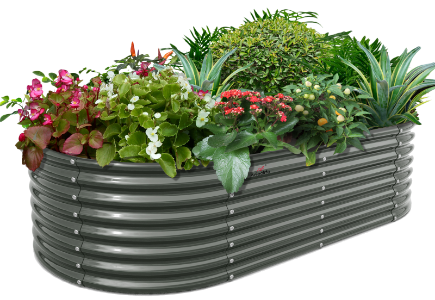The Ultimate Guide to Building Your Own Raised Garden Bed: Materials, Designs, and Tips
Cuerpo
Creating a raised garden bed can transform your gardening experience, offering numerous benefits such as improved drainage, better soil quality, and easier access. This guide will explore the essential materials, various designs, and helpful tips to ensure your raised garden bed thrives.

Understanding Raised Garden Beds
A raised garden bed is essentially a garden plot elevated above the surrounding soil. This design allows for better control over soil quality and drainage, making it ideal for growing vegetables, herbs, and flowers. Have you ever wondered why so many gardeners prefer this method? The answer lies in its versatility and ease of use.
Materials for Your Raised Garden Bed
Choosing the right materials is crucial for the longevity and effectiveness of your raised garden bed. Here are some popular options:
- Wood: Untreated cedar or redwood is often recommended due to its natural resistance to rot.
- Metal: Galvanized steel is durable and can create a modern aesthetic. Check out
for high-quality options.
- Concrete Blocks: These provide excellent insulation and can be arranged in various shapes.
- Bricks: A classic choice that offers a timeless look and durability.
Designing Your Raised Garden Bed
When it comes to designing your raised garden bed, consider the following factors:
- Size: A standard size is 4 feet by 8 feet, but you can customize based on your space.
- Height: Typically, beds are 12 to 24 inches high, depending on the plants you wish to grow.
- Location: Ensure your garden bed receives at least 6-8 hours of sunlight daily.
- Accessibility: Consider paths around your bed for easy access to plants.
Tips for Successful Gardening in Raised Beds
To maximize the benefits of your raised garden bed, keep these tips in mind:
- Soil Quality: Use a mix of topsoil, compost, and organic matter to create a nutrient-rich environment.
- Watering: Raised beds tend to dry out faster, so regular watering is essential.
- Crop Rotation: Change your plants each season to prevent soil depletion and pest buildup.
- Mulching: Apply mulch to retain moisture and suppress weeds.
Conclusion
Building a raised garden bed is a rewarding project that can enhance your gardening experience. By selecting the right materials, designing thoughtfully, and following essential gardening tips, you can create a thriving garden space. Whether you are a novice or an experienced gardener, a raised garden bed can offer a productive and enjoyable gardening experience.






Comentarios